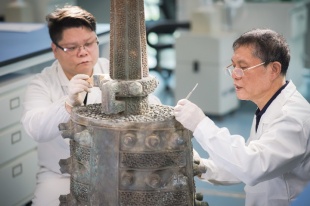Relic restorers bring ancient treasures back to life


According to Fang, some of the chime bells rescued in the 2009 excavation were deemed too broken to be restored, including the heaviest one. Fortunately, in recent years, digital technologies have been applied effectively to the restoration of relics, saving more artifacts.
"3D scanning and 3D printing are being used to restore the severely damaged and deformed cultural relics. This is something the older generation of cultural relic protection workers couldn't even dream of," he said, "These are the advantages that the younger generation has."
Fang Chen joined the museum in 2014. He has received strict training from masters like his father and acquired new technologies that his predecessors may have found challenging.
"The restoration work should also keep pace with the advances in technology," said the son. "This doesn't mean overturning the traditional methods. It is about combining old and new methods to better protect and restore cultural relics."
Fang Chen knows clearly that he still has a lot to learn. He regards his father as a mentor and idol, whose professionalism has been achieved through decades of hard work.
While some restorers, like the Fangs, deal with heavy objects such as bronzeware, others are good at fixing things as light as a piece of paper.
For around four decades, a desk lamp, a plate of adhesive paste, and a brush have constituted the basic equipment of Wang Jinyu's daily work.





































